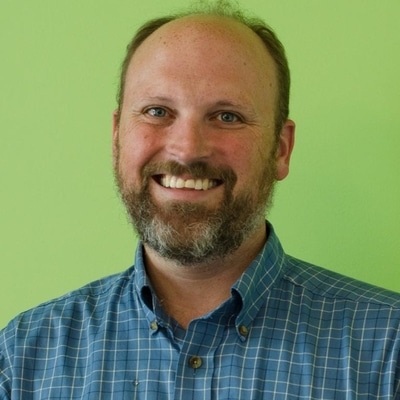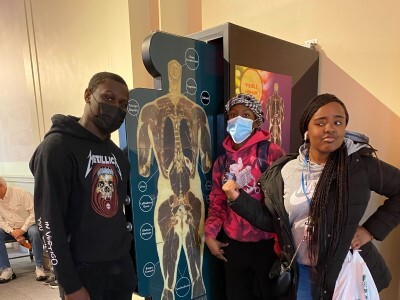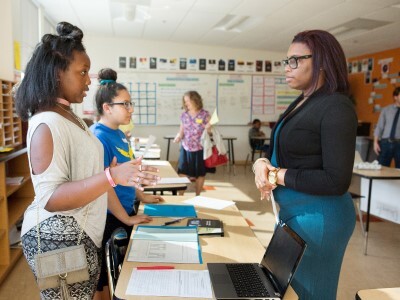Reimagining Assessment
Measures that Matter Most: Q&A with Two Rivers
Topics
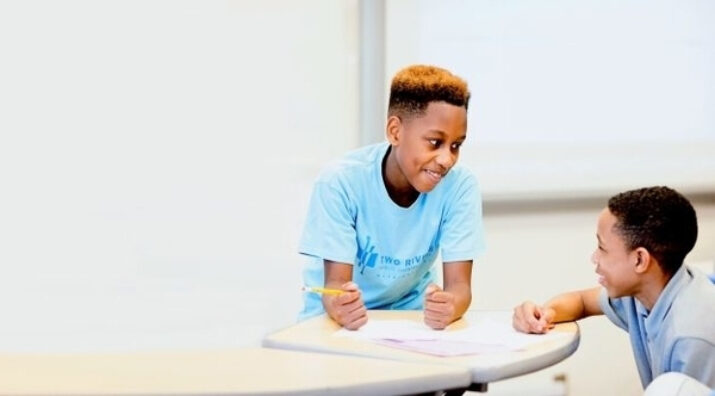
Educators are rethinking the purposes, forms, and nature of assessment. Beyond testing mastery of traditional content knowledge—an essential task, but not nearly sufficient—educators are designing assessment for learning as an integral part of the learning process.
10 Years of Next Gen Learning | 2016
Two Rivers staff share an update on their work to measure the transfer of deeper learning outcomes documented in NGLC's Measures that Matter Most research project.
How do next generation educators measure success? That was the question that guided NGLC's 2016 Measures that Matter Most research project, developed with the support of Overdeck Family Foundation. Amidst calls to demonstrate whether innovative next gen school models were "working," NGLC set out to ask its community what measures matter most to them. We were particularly interested in highlighting the different approaches and methodologies that they found useful so we could push the national conversation and encourage funders, researchers, and educators to work together to create better measures of next gen learning.
We found that next gen schools use a wide range of measures to determine if their innovations improve learning. Measures involved students, staff, and families and some assessed the organizational health and conditions for learning as well as learning outcomes. We shared tools and resources for measuring success from eight organizations. One of those organizations was Two Rivers Public Charter School in Washington, D.C. which was developing methods to measure the transferability of deeper learning outcomes.
Here, Jeff Heyck-Williams, the director of the Two Rivers Learning Institute, reflects on their work in 2016 and considers what measures matter most today.
When NGLC launched the Measures that Matter Most research project in 2016, we asked schools to tell us how you measure the success of your innovative model. What are the measures of success that matter most to Two Rivers Public Charter School?
We are still committed to a broader definition of student success. With that in mind, we look for ways to illuminate not only students’ mastery of knowledge and skills but also their development of character and critical thinking and problem-solving skills.
While traditional metrics of success still play a part, we feel like they don’t tell the whole story of what success looks like for our students. Consequently we have integrated processes of regularly reviewing the quality of student work through a protocol that examines not only the complexity, but also the craftsmanship and authenticity, of that work. In addition, we have students reflect on their growth in social-emotional competencies that we call scholarly habits.
It is this combination of evaluations on the quality of our students’ work and their own reflections on their growth in character that matter the most.
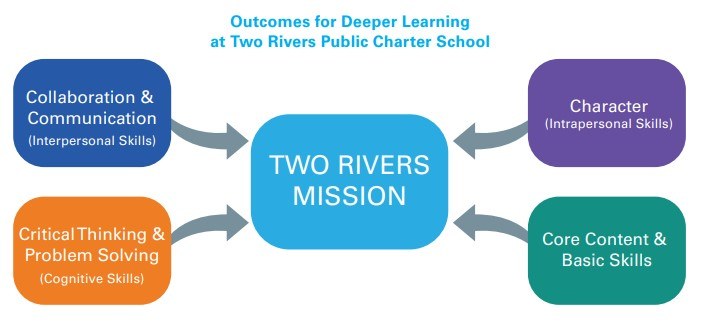
With the project, we shared a case study of how Two Rivers was working to better measure the transferability of deeper learning outcomes. Why was this important at the time?
When we first started doing this work, we realized that while everyone agreed that critical thinking was important for students’ long-term success, there wasn’t anyone really taking a clear look at how well we are developing those skills in students. We had a hunch that project-based learning better prepared kids to be problem-solvers, but without a way to determine the degree to which they gained transferable skills from these learning experiences we were at a loss to figure out if what we were doing was actually working. Consequently, our project was aimed at creating tools that would help us get a better picture if that was actually occurring.
Is it still important today, 5 years later? Why/why not?
These metrics are just as important today as they were five years ago. However, one of the things that we learned was the depth to which paying attention to something and trying to measure it changes the thing we were originally observing. By paying deep attention to how our students were developing deeper learning skills, we were better able to define what we meant by critical thinking skills and thus we have been better able to teach toward those skills. We absolutely still need to pay attention to how students are building their capacity to think critically. Building and working with assessment tools to measure those skills have been for us one of the best ways to improve the teaching of those skills.
What updates do you have or new work are you doing around measuring success?
There are two ideas that I think we are really working to lean into as we explore how we move forward in measuring success for students. First, there continues to be pressure to narrow the definitions of what success looks like for students. It is essential for us that we continue to advocate for a definition that is broader than just defining success in K-12 schooling by test scores. Second, we have come to see the vital importance of including the voices of our students and families in defining what success looks like. We are looking for ways to better engage with students and families around this question and how we might understand what measuring their definitions of success might look like.
NGLC recently released the Full Spectrum of Evidence toolkit, another measurement project that Two Rivers participated in. The toolkit offers resources and strategies to center students in measurement, decision-making, and evaluating program/school success. In what ways does student-centered evidence connect to measurement of deeper learning outcomes?
As stated above, we need to be engaged with our students and families about what success might look like for them. Part of our jobs has to be understanding our communities and the context where our students are now and where they are headed. Student-centered evidence is core to that undertaking because it both helps us better understand how we might support them in realizing their goals and the degree to which those supports are working.
As we look ahead to the next 5-10 years, what do we need to be exploring and doing—collectively—to advance the assessment of deeper learning and measure the success of next gen learning innovations?
There are three things that I think we need to prioritize in the next five to ten years around assessments of deeper learning.
- We need to continue to advocate for broader definitions of student success. There are lots of forces pushing toward a one-dimensional vision and we know that doesn’t serve our students.
- We need to be listening to students and families about what success means to them. Our tools and metrics need to be aligned with those definitions.
- We need to redefine accountability systems so that all stakeholders can see themselves in the system. This doesn’t mean throwing out old systems of accountability and testing whole cloth, but realigning their importance in larger frameworks of shared accountability for our students’ success.
This article is part of NGLC’s 10 Years of Next Gen Learning celebration. In 10 days, we travel through time to reflect on 10 years of next gen learning innovation, building a network of school and district communities, and designing for equity. Follow #10YearsOfNextGen and register for our live panel webinar on Thursday, November 18, with Susan Patrick, Eric Tucker, Caroline Hill, and Nicole Allard, moderated by Tom Vander Ark. Join us!
Images courtesy of Two Rivers Public Charter School.

